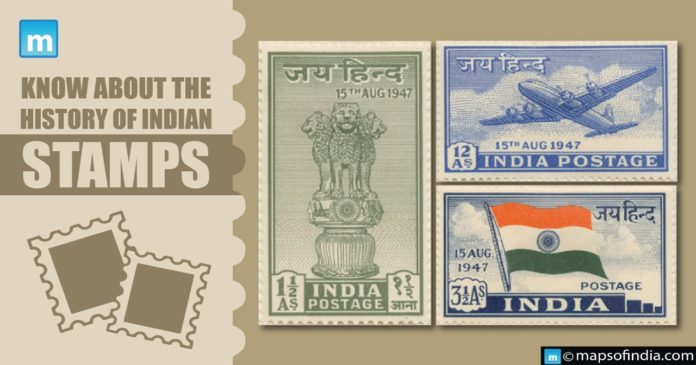World Post Day is celebrated every year on October 9 to commemorate the creation of the Universal Postal Union. However, in India, it is celebrated on October 10 as an extension of World Post Day.
India gained Independence on August 15, 1947, ushering in a new era in the country’s history. Still, philatelists had to wait another 98 days for India’s most commemorative stamp to be released on November 21, 1947.
First Stamp
For the event, the Postal Telegraph Department issued a huge Kashi postmark with the motto “Jai hind,” and letters mailed to the country’s central post offices were cancelled with this postmark.
The Lion Capital of Ashoka, erected on the summit of a column in Sarnath in Varanasi, is depicted on India’s first commemorative stamp. The lion capital has been used as India’s state emblem since then. The symbols had a denomination of one and a half annas and featured an image that inspired the Hindi word “Jai hind.”
Other Postage Stamps
Three stamps were supposed to be issued at the time of Independence. The remaining two stamps were issued on December 15, 1947, with the three and a half annas stamp depicting the national flag in tricolour Saffron on top, white in the middle, and green at the bottom.
The stamp features an aircraft, a symbol of the contemporary era. These stamps are also called Jai Hind stamps since they contain the inscription “Jai Hind” in Hindi.
Offset lithography was used to print the stamps. Because differences in inking at different stages caused specimens with the top of the flag in deep orange or light orange and the lower section in pale green or deep green to appear, the three and a half annas stamp was printed in three colours in three steps.
National Philatelic Museum, New Delhi
The National Philatelic Museum of India was opened in New Delhi on July 6, 1968, and houses an extensive stamp collection, including the first stamp printed in India by the Sindh Dak (1854) and stamps issued by the rulers of the Princely States before Independence.
Stamps portraying our culture, heritage, notable individuals, independence fighters, and institutions have also been shown.




